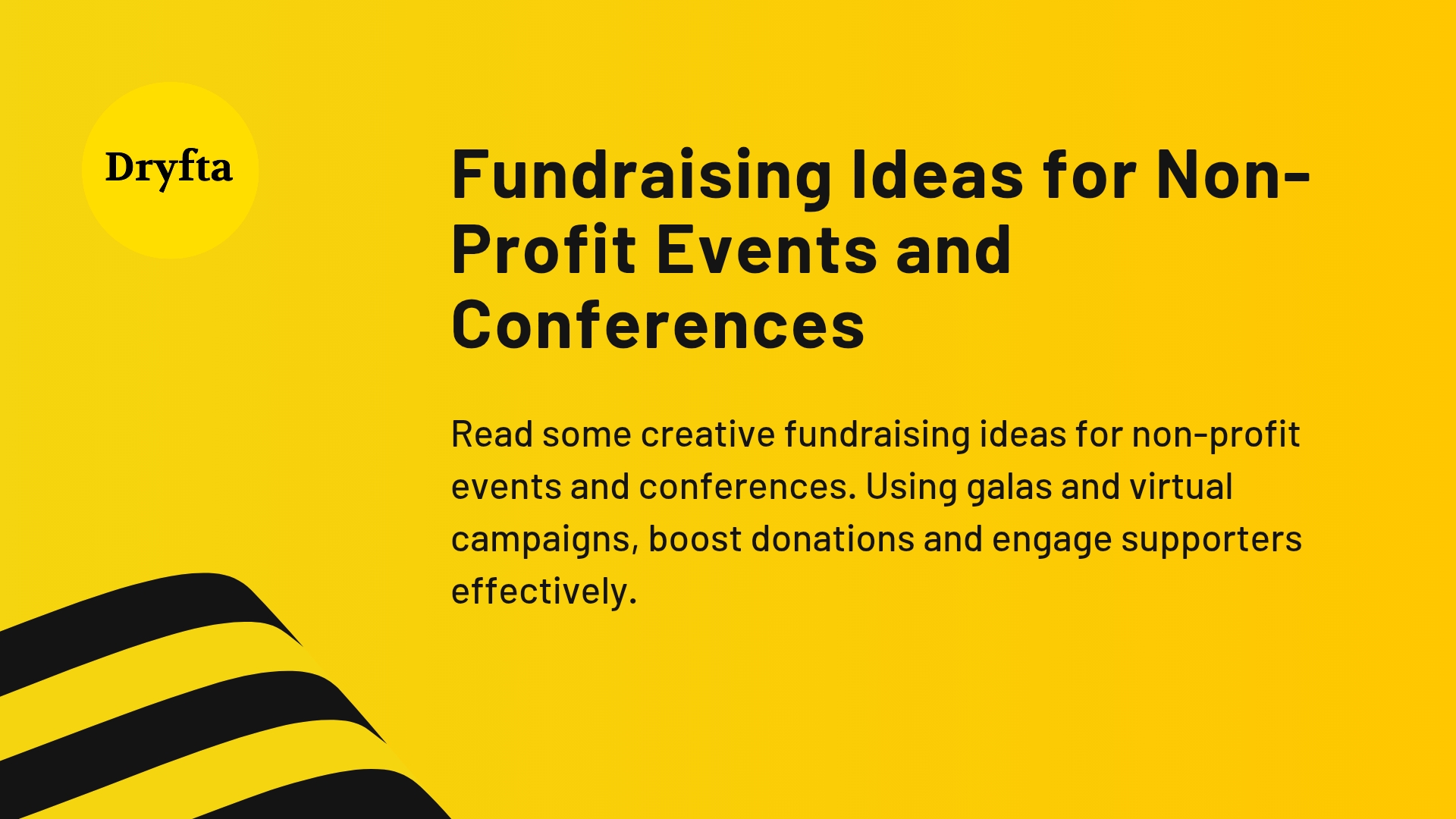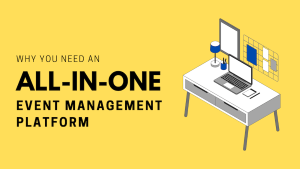
Non-profit organisations, regardless of their scope and area of work, find themselves battling the same challenge: raising adequate funds. The challenge of fundraising gets more complicated as NGOs attempt to generate revenue in a manner that’s sustainable and true to their ultimate mission.
Events and Conferences Offer Hope. In this context, events and conferences provide the right opportunity for NGOs struggling with a paucity in funding. When people come together, it serves as a valuable forum to inspire individuals to contribute to your cause, either in cash, kind or by any other means. Organisers need to think creatively, plan ahead and strategise for the right target audiences to securing substantial funding.
In this blog, we’ll touch base on some effective ideas for hosting successful fundraising events.
What You Need To Know About the Modern Fundraising Environment
The non-profit sector has changed fundamentally with regard to how organisations look at fundraising. The methods that have been tried and tested for years still hold value. But donors today are tech-savvy and they hope for convenience, transparency and results in action. Therefore, it is important for event coordinators to strike the right balance between the age-old fundraising techniques and more contemporary approaches.
Modern Technology in Fundraising
Modern technology plays an important role in this regard. Online event management platforms assist in streamlining the sophisticated logistics of conference planning. Non-profits can focus more energy on relationship building and less on administrative tasks. The rise of virtual and hybrid events has opened up new avenues for fundraising.
These modern avenues allow organisations to reach out to a vast majority of audience and saves thousands in overhead and miscellaneous costs. The flexibility also means more people can participate irrespective of their location and financial situation.
Virtual Auctions and Raffles
Ticketed Virtual Sessions
Organisers and associated NGOs can create tiered access for their conference’s content. While they could offer some sessions freely, they could reserve premium workshops, masterclasses, or networking sessions for ticket holders who are willing to pay higher registration fees. This approach provides value to those willing to invest more while maintaining accessibility for others. The key to this arrangement is making the upgrade feel worthwhile but without alienating those who choose basic registration.
Digital Sponsorship Opportunities
Event sponsors can choose to have their logos featured in virtual conference lobbies. Digital sponsorship knows no bounds and is restricted by few to no logistical barriers. Therefore, organisers can host branded breakout rooms and get exclusive access to attendee contact information for later use. These digital sponsorships often cost substantially less compared to acquiring physical booth spaces.
In-Person Fundraising Strategies
Physical conferences and events offer one-of-a-kind fundraising opportunities through face-to-face interaction within shared spaces. There’s something truly impactful about a number of people coming together in person with a shared goal and passion. Live auctions as a fundraising effort make it both exciting and competitive for an audience. Choose high-value items or experiences that will speak to the interests of the audiences.
Fund A Need
A fund-a-need segment, where attendees donate directly to a specific project or goal, has repeatedly proven effective. They work best when organisers can back them up with some concrete instances of impact and change.
It allows organisers to show exactly how their donations will and could be used. It requires just one moving story about a person your organisation has helped.
Cause-Related Marketing Campaigns for Fundraising
Partner with businesses on campaigns where a portion of sales during specific periods goes to your organisation. These arrangements work especially well when timed around your conference, creating momentum and public awareness. The business receives positive PR while you get funding and visibility.
Make these partnerships easy for the business to promote. Provide social media graphics, suggested copy, and clear information about your cause. The simpler you make it for them, the more enthusiastically they’ll participate.
Merchandising and Product Sales
Selling products related to your mission generates revenue while spreading awareness. Every person wearing your t-shirt or carrying your tote bag becomes a walking billboard. Choose merchandise that people actually want to use, not items that end up in a drawer.
Peer-to-Peer Fundraising Campaigns
Your community’s networks multiply your reach exponentially. When your supporters ask their friends and family to donate, these requests come from a place of trust and credibility. This approach turns your supporters into fundraisers.
Attendee Engagement Features
Dryfta’s networking tools, mobile app and virtual event facilities are sure to keep your attendees and audiences engaged throughout. From start to end, gaining and sustaining engagement can potentially encourage the audience to donate to your organisation financially.
Make sure not to sound too salesy and in-your-face. When your cause is one of passion and impact, engaged attendees feel deeply connected to your mission. The mobile app particularly changes how people experience conferences. They can check schedules, connect with other attendees and get push notifications about important information. These features keep people plugged in even during breaks.
Data Analytics and Reporting
Making clever use of data and reporting features can be a game-changer in helping you gauge which fundraising strategies work best for you. Track registration patterns, sponsorship ROI and donation trends to inform future event planning and fundraising decisions. Data removes guesswork from your planning process. Look for patterns in your data:
Which sponsors renew?
Which registration tiers sell out first?
When do most people register?
The answers to these questions will help you optimize almost every other aspect of your fundraising event.
Attendee Feedback
A mistake that organisers cannot afford to make is not asking their attendees for feedback. In doing so, organisers miss inputs that can either make or break their event.
Managers can ask participants about their overall experience at the event. It also helps to put down questions specifically aimed at assessing how well they’ve received the fundraising efforts at the event:
Were sponsorship activations valuable?
Did auction items appeal to their interests?
Did registration pricing seem fair?
Use this feedback to your advantage and make future events better in execution. Your attendees will be more than happy to tell you what worked for them.
Keep your surveys short and focused. Long surveys may prove to be tedious for attendees. Ask the questions that matter most and make it easy to respond. Consider offering a small incentive as appreciation for those who do complete the survey.
Moving Ahead with Confidence and Cash
For non-profits, the most successful fundraising efforts are simply those that authentically pull supporters towards your end goal. There is barely any need to go out of your familiar ways to make some money. Do what you’re doing and keep at it but more mindfully and pragmatically. Word of your mission needs to reach more people, and that is what your fundraising efforts must revolve around.
The technology also exists to support your ambitions. Whether through attendance fees, sponsorships, auctions or direct donations, every interaction should reinforce why your work matters and how contributions create real impact. When supporters understand and believe in your cause, they become donors who amplify your reach far beyond any single event. Start small if you need to. Test one or two new strategies rather than overhauling everything at once. Learn what works for your audience and build from there.




